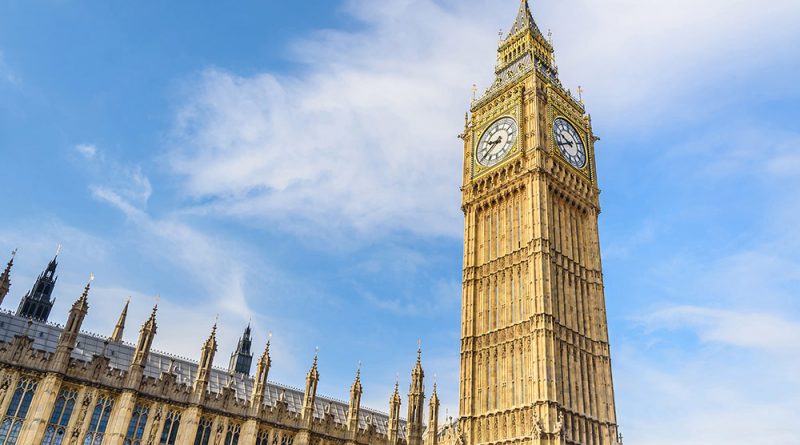Big Ben
What is impossible to imagine without old England? The legendary five o’clock tea, Westminster Abbey, the Tower of London and, of course, the famous Big Ben. It has long been more than just a tourist icon: the importance of this seemingly ‘mere landmark’ to tourists and locals cannot be overstated.
Quick Description
Punctuality is the courtesy of kings. In London this saying is especially true. In the British capital, of the several hundred clocks in the city, only one is correct: the one on the tower of Big Ben, which is part of the architectural ensemble of the Palace of Westminster (popularly known as the Houses of Parliament).
The traditional name for Big Ben is the name of the tower or clock mechanism inside, but it is actually the name of a huge clock bell. The official name of Big Ben is the Palace of Westminster Clock Tower. The history of London’s main chimes dates back to the 1840s, when architect Charles Barry, who was rebuilding the old Westminster building, decided to add a clock tower to the palace. Parliament agreed to give money to build the clock, but on the condition that it would be the most accurate in Britain and that its sound would be heard throughout the capital.
The clock tower was designed by the world famous neo-Gothic master Augustus Pugin. Big Ben is 96 metres high. The brick tower, topped with a spire and clad in coloured limestone, stands on a 15-metre concrete foundation. At a height of 55 metres, space was left for the clock face, which was also designed by O. Puigin. The dial was assembled from 312 pieces of opaline glass enclosed in a 7-metre steel frame, and the discs were gilded at the edges. The 2.7-metre-long hour hands were cast in iron and the 4.2-metre-long minute hands in copper. Inside the tower, under the clock room, was a 300 kg pendulum and a five-ton mechanism.
Big Ben is the most accurate clock in the world
The carillon rings a huge bell inside the tower. It is Big Ben. The bell was cast by master craftsman Edmund Beckett Denison. He decided that his creation should surpass the 10-tonne York (“Great Peter”) bell and cast a 16-tonne bell. To do this, Denison changed the recipe for the traditional alloy and the way it was cast.
In front of a large audience, the bell was ceremoniously delivered in a carriage drawn by 16 horses. But two months later, the bell broke and a new one had to be cast, weighing 13.7 tons, with the weight of the hammer reduced by half. The second bell cracked again, but this time its repair was limited to making a square incision to prevent the crack from spreading, and Big Ben was turned a quarter turn to prevent the hammer from hitting the damage. On 31 May 1859, Big Ben gave London its first public address with its famous resonating bell.
For 150 years, Big Ben has rung continuously every hour, assisted by smaller bells. Together they play the melody of the Cambridge Clock, marking the rhythm of the words “The Lord protect me in this hour, and his power shall fail no man”. The first stroke of the bell coincides exactly with the first second of the hour. If Big Ben is late or delayed, a coin – an old English penny – is placed on the pendulum, which speeds up the clock by 2.5 seconds a day. By adding or removing the coin, the keeper ensures the accuracy of the five-tone movement.
One day, however, he miscalculated. A few years ago, when Big Ben was a second late, the keeper nearly resigned. Every two days the mechanism is checked and lubricated. Big Ben – Big Lord Ben At the base of each of Big Ben’s four spheres is an inscription in Latin: “God save our Queen Victoria I”. It is a unique tribute to the empress who ruled the country for more than 63 years, and it was during the Victorian era that the British Empire reached its peak. But the bell of Big Ben itself is named after Lord Benjamin Hall. The English say that Sir Hall made a long and boring speech at a meeting of Parliament when the bell’s name was being discussed.
Suddenly, a joker shouted: “And ring the Big Ben bell and get it over with! There was an explosion of laughter in the House of Lords, signifying unanimous agreement. The truth is that Sir Hall had a solid build and spoke with a resounding bass, earning him the nickname Big Ben. Another version is that the clock was not named after Sir Hall, but after the famous heavyweight boxer of the time. Visiting Big Ben In the 1920s, with the advent of the radio era, Big Ben became world famous. Every hour, the BBC radio station broadcasts the chimes live. In London, tourists can only watch the chimes from outside. Visitors are not allowed to enter the clock tower of the palace, where Parliament is based, to rule out terrorist threats. Only Londoners and VIPs can climb the 334-step spiral staircase and see the inner workings of the clock and bell.
Big Ben (Elizabethan tower) – Europe’s main bell
Address: Great Britain, London, Palace of Westminster
Date of construction: 1859
Height: 96.3 metres
Design, construction: Augustes Pugin
Coordinates: 51°30′ 02.6 “N 0°07′ 28.2 “W
You may alo like:

